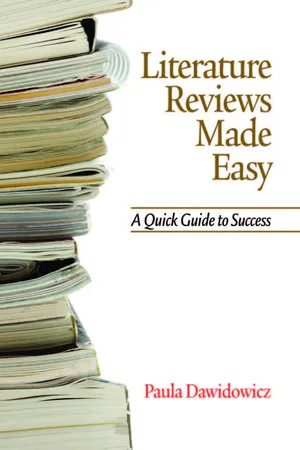
This is a test
- English
- PDF
- Available on iOS & Android
eBook - PDF
Literature Reviews Made Easy
Book details
Table of contents
Citations
About This Book
Plaintext description.
Frequently asked questions
At the moment all of our mobile-responsive ePub books are available to download via the app. Most of our PDFs are also available to download and we're working on making the final remaining ones downloadable now. Learn more here.
Both plans give you full access to the library and all of Perlego’s features. The only differences are the price and subscription period: With the annual plan you’ll save around 30% compared to 12 months on the monthly plan.
We are an online textbook subscription service, where you can get access to an entire online library for less than the price of a single book per month. With over 1 million books across 1000+ topics, we’ve got you covered! Learn more here.
Look out for the read-aloud symbol on your next book to see if you can listen to it. The read-aloud tool reads text aloud for you, highlighting the text as it is being read. You can pause it, speed it up and slow it down. Learn more here.
Yes, you can access Literature Reviews Made Easy by Paula Dawidowicz in PDF and/or ePUB format, as well as other popular books in Pedagogía & Investigación en educación. We have over one million books available in our catalogue for you to explore.
Information
Topic
PedagogíaSubtopic
Investigación en educaciónTable of contents
- Cover
- Half-Title
- Title
- Library of Congress Cataloging-in-Publication Data
- Contents
- Preface
- Chapter 1: Introduction
- Chapter 2: The Literature Review Process
- Chapter 3: Objective Research
- Chapter 4: Generalizability and Transferability
- Chapter 5: Quoting and Paraphrasing
- Chapter 6: Selecting Quality Sources for Your Review
- Chapter 7: Brainstorming: Examples of Factors to Consider
- Chapter 8: Creating an Initial Outline for Your Literature Review
- Chapter 9: Types of Article Examination Used in a Literature Review
- Chapter 10: What is an Analysis?
- Chapter 11: Creating Structure for an Analysis
- Chapter 12: What is a Comparison?
- Chapter 13: Contrast: The Important Other Sideof the Coin
- Chapter 14: Differentiating Between Strong and Weak Comparisons and Contrasts
- Chapter 15: Evaluation of Importance of the Literature to a Topic of Interest
- Chapter 16: Maximizing Your Evaluation
- Chapter 17: How Does Synthesizing Ideas Create a Framework?
- Chapter 18: What Does a Synthesis Look Like?
- Chapter 19: Synthesis and Integration: Complementing Ideas
- Chapter 20: Analysis, Comparison, Contrast, Evaluation, Synthesis, and Integration
- Chapter 21: Organizing Your Assessment of the Literature
- Chapter 22: Separating Your Ideas from Authors’ Ideas
- Chapter 23: Peer Critiquing
- Chapter 24: Reviewing Completed Publications
- Chapter 25: Expanding and Revising
- Chapter 26: Structuring Your Work
- Chapter 27: Formulating Introductions
- Chapter 28: Formulating Conclusions
- Chapter 29: Revisions and Editing
- Chapter 30: Summary of the Writing Process
- Chapter 31: Review of Analysis Methods
- Appendix A